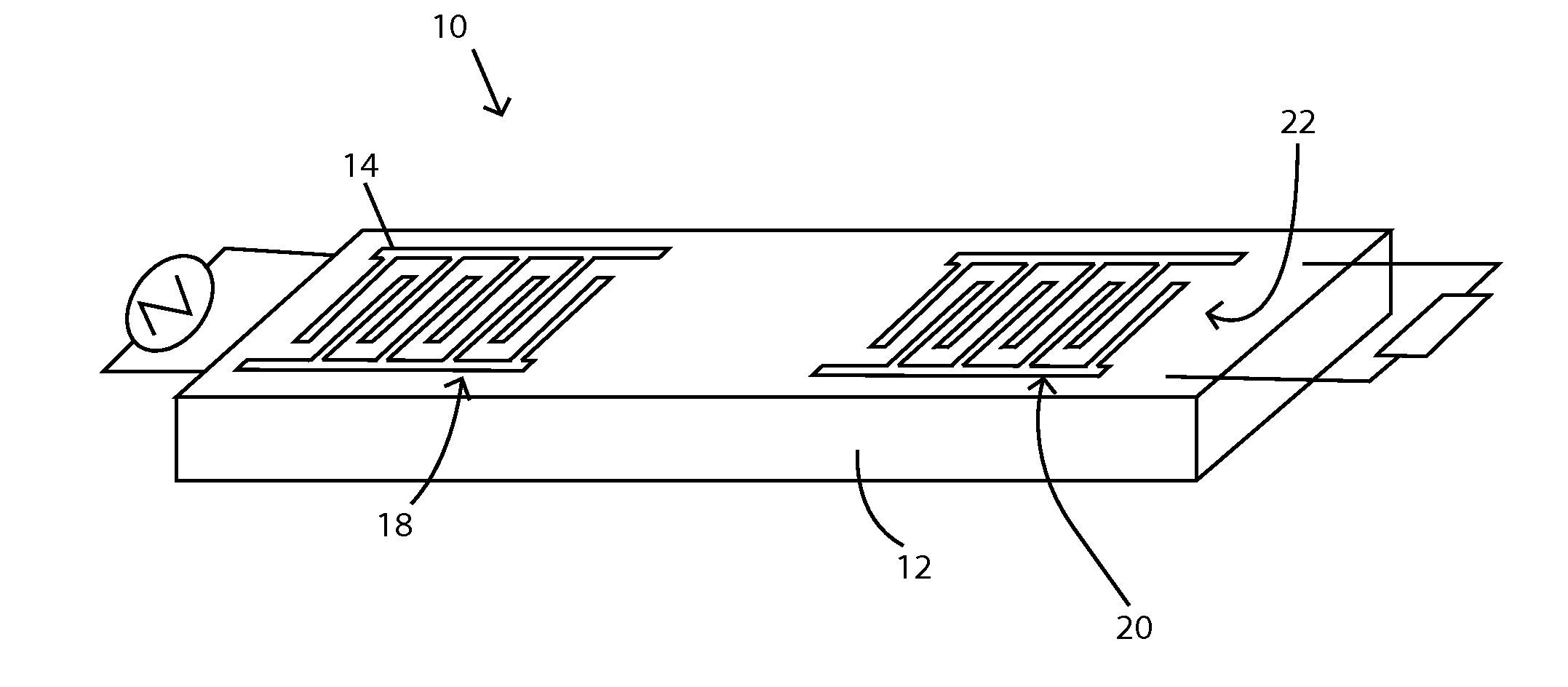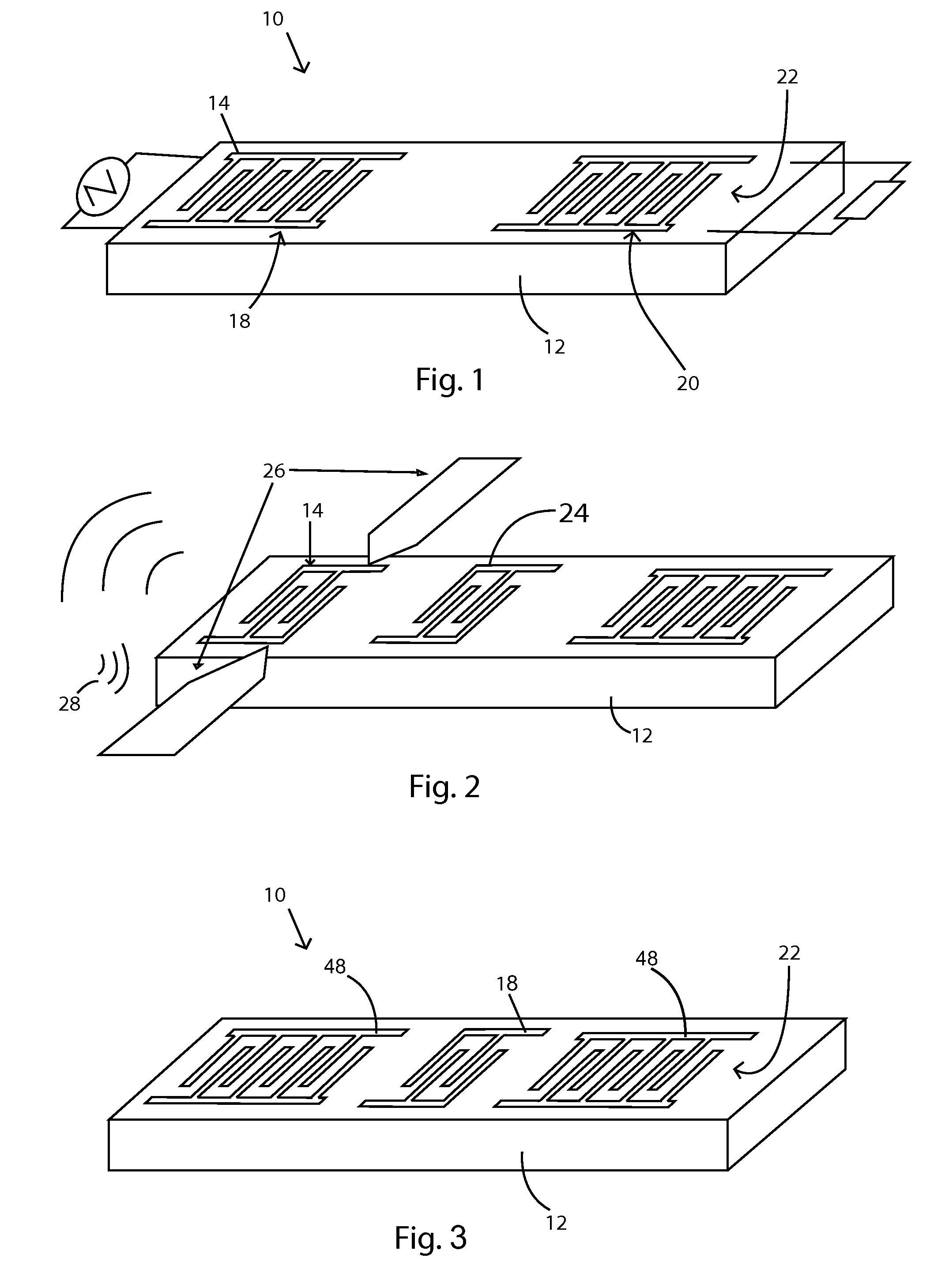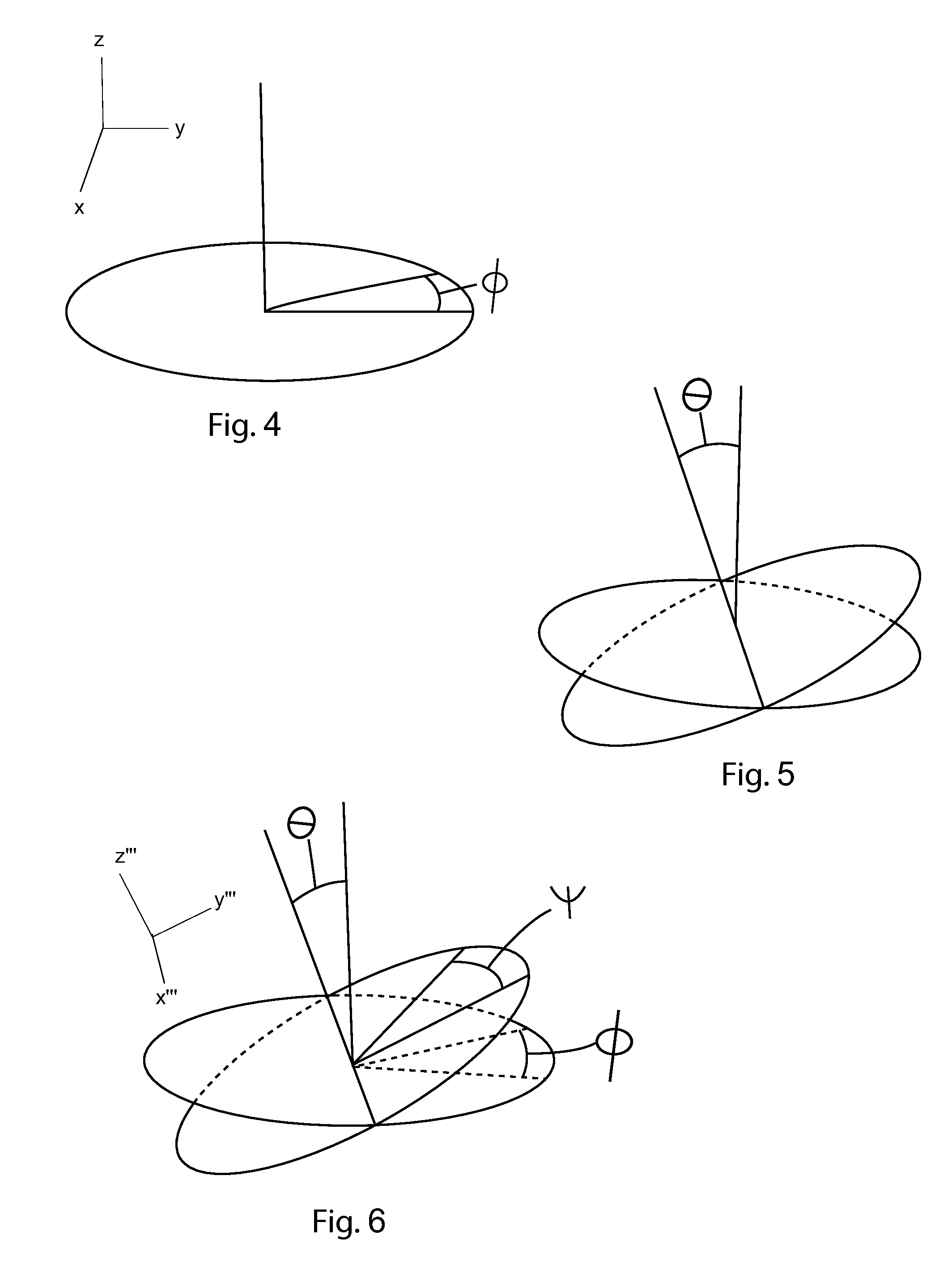Device and method for measuring physical parameters using saw sensors
a sensor and physical parameter technology, applied in the field of sensors, can solve the problems of insufficient temperature sensitivity of high-temperature saw crystal orientation, insufficient prior art of sensing devices for measuring parameters such as pressure, torque, strain, etc., and achieve the effect of reliably providing sensing measurements
- Summary
- Abstract
- Description
- Claims
- Application Information
AI Technical Summary
Benefits of technology
Problems solved by technology
Method used
Image
Examples
Embodiment Construction
[0034]As shown in FIG. 1, the device 10 includes a piezoelectric crystal 12 on which is affixed a layer of metallic electrodes 22. The input 18 and output 20 structure each consists of a periodic interdigitated transducer (IDT) 14 electrode structure of several wavelength periodicities, λ, in width. The synchronous operation of the IDT at the surface launches an electromechanical surface acoustic wave (SAW) which propagates at ˜3×103 m / s, or approximately five orders of magnitude slower than the propagation of the electromagnetic wave (EM) in vacuum (3×108 m / s). This allows significant delay from input to output, namely five orders of magnitude longer delay than for an EM wave propagating in air using a similar sized structure. For this reason, the device using the IDT geometry shown in FIG. 1 is called a delay line, and represents one of many possible signal processing devices enabled by SAW technology. These devices are very small, ranging from a few millimeters to sub-millimeters...
PUM
 Login to View More
Login to View More Abstract
Description
Claims
Application Information
 Login to View More
Login to View More - R&D
- Intellectual Property
- Life Sciences
- Materials
- Tech Scout
- Unparalleled Data Quality
- Higher Quality Content
- 60% Fewer Hallucinations
Browse by: Latest US Patents, China's latest patents, Technical Efficacy Thesaurus, Application Domain, Technology Topic, Popular Technical Reports.
© 2025 PatSnap. All rights reserved.Legal|Privacy policy|Modern Slavery Act Transparency Statement|Sitemap|About US| Contact US: help@patsnap.com



